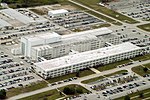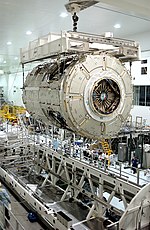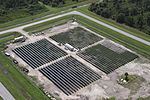Merritt Island National Wildlife Refuge

Merritt Island National Wildlife Refuge is a 140,000-acre (57,000 ha) U.S. National Wildlife Refuge (NWR) on the Atlantic coast of Florida's largest barrier island. NASA's Kennedy Space Center and visitor complex are also situated on the island and NASA can restrict access to the refuge based on its operational needs. The NWR contains over 1000 species of plants, 117 species of fish, 68 amphibians and reptiles, 330 birds, and 31 mammal species, of which 21 species are listed as endangered by the state of Florida or by the US federal government. Management of the NWR is provided through the Merritt Island NWR Complex, which provides hiking and driving trails for the public, subject to access restrictions from NASA. It is a 'gateway site' for the Great Florida Birding Trail.
Excerpt from the Wikipedia article Merritt Island National Wildlife Refuge (License: CC BY-SA 3.0, Authors, Images).Merritt Island National Wildlife Refuge
Kennedy Parkway,
Geographical coordinates (GPS) Address Nearby Places Show on map
Geographical coordinates (GPS)
| Latitude | Longitude |
|---|---|
| N 28.516666666667 ° | E -80.666666666667 ° |
Address
Kennedy Parkway
Kennedy Parkway
Florida, United States
Open on Google Maps









